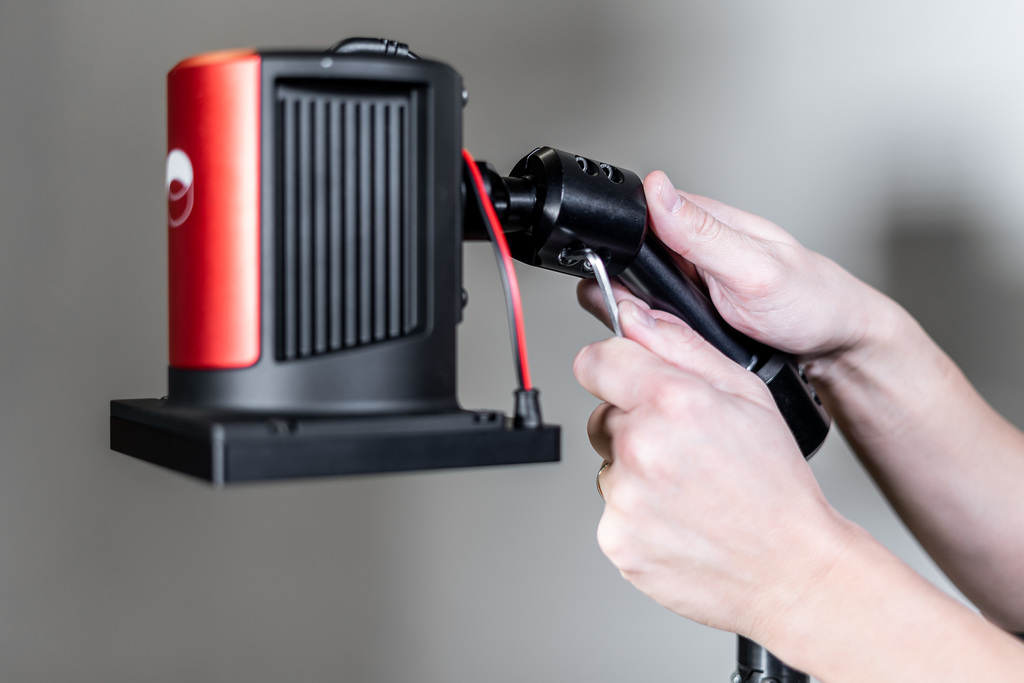Vision of the future
MALL AND medium-sized enterprises are facing growing challenges. Smaller production lot sizes, frequent line changeovers and increased competition are pressuring them to become increasingly efficient, agile and productive. The growing difficulty to acquire skilled workers for quality assurance (QA) positions is creating another challenge in this fast-paced environment.
This is why many small to medium manufacturers are moving towards automating production. Quality inspection must be automated as well to ensure that it is not a limiting factor in manufacturers’ ability to automate end-to-end, become more efficient and agile and thus more competitive.

Manual shortcomings
Manual inspection comes with a series of pain points. The first is that in many cases, this method is based on sampling, meaning that for every inspected item, there are dozens of items that don’t undergo any checks at all.
The second is that manual inspection is a tedious, repetitive process, so inspectors could get tired or distracted and let their guard down, missing errors. Also, as with any manual task, different people might not have the same quality standards and so inspection may vary from one shift to another.
Finally, some items are simply too complex to be efficiently inspected by the human eye, meaning that hardly visible defects could easily go unnoticed through the QA process.
The solution to the shortcomings of manual inspection lies in automating QA processes with a machine vision system that is cost-effective, easy to set up and train, and flexible enough to tackle a wide variety of QA challenges. An effective QA solution also needs to be generic or universal, meaning that it can inspect a wide range of parts and use cases and not be limited to the one product it was tailored to inspect, providing the flexibility required to switch from one part to another, or one location to another, quickly and easily.
The INSPEKTO S70 Gen.2, the only Autonomous Machine Vision (AMV) system currently on the market, offers all of these characteristics. Unlike traditional machine visions solutions, which are built ad hoc by an expert, the S70 Gen.2 is an off-the-shelf product which includes everything the user needs — camera, lighting equipment, PC, mounting system, software and more. It is ready to use and can inspect a very wide range of products, in a variety of materials, produced through many different manufacturing and assembly processes. It can be deployed to inspect incoming good at different production steps or at the end of the line and can be installed as a standalone station or integrated on the production line.
Mimicking cognitive human vision and using the most advanced AI technology, the system can detect defects by being exposed to an average of only 20 OK (good) samples and does not require any NOK (defective) samples. AMV systems learn how a product is supposed to look like and, based on their strong AI capabilities and millions of previous data entries, can flag any deviation from the memorised image. This leads to two main benefits. The first is that AMV systems can detect a wide range of defects, even unknown and unexpected ones, and not just the few ones they’ve been trained to recognise. The second is that the setup process is extremely simple because it requires only good items, which are abundant in any production line.
The whole setup process can be performed by the plant’s own personnel in as little as 45 minutes, making AMV systems the first choice for manufacturers that are looking to automate their QA processes. If required, additional help is available from the Inspekto team, on site or remotely.
AMV systems eliminate the risks that come with traditional machine vision systems. Implementing an INSPEKTO S70 Gen.2 and creating the proof of concept (POC) will take users less time than they would normally need to just research and select the right components for any other machine vision project.
QA for small batches
Historically, the cost and complexity of machine vision solutions meant that manufacturers needed high production volumes or very expensive products to justify the purchase of these systems. However, the cost-effectiveness of AMV systems makes them ideal for small production runs, as well as production lines that are frequently modified and reconfigured to produce new items. The cost-effectiveness of AMV systems makes them ideal for small production runs.
Because of their ability to retrain quickly and easily, AMV systems offer manufacturers unlimited flexibility. To inspect a new product, the user simply needs to repeat the initial setup procedure and create a new profile. In 45 minutes, the system will be ready to inspect a completely different item. There is no need to adjust the lighting apparatus, change any of the sensors or adjust the camera settings. As the name suggests, Autonomous Machine Vision systems autonomously adjust the parameters of the electro-optical system to fit the new location, environment and product.
The system can also inspect several different products on the same location, easily switching from one to the other in real time. In this sense, the S70 Gen.2 effectively mimics the capabilities of a human inspector, who can inspect different products on the same line and quickly determine whether they are good or faulty, but with increased precision and reliability and with no need for breaks.
Data record
As opposed to human inspectors, AMV systems remember the details of each and every item they inspect, storing images in an archive that manufacturers can consult at any time.
This offers SMEs the invaluable chance to see exactly where and why defects happen and optimise their production processes accordingly. Over time, this can substantially increase production quality and have a positive impact on the bottom line of the business.
To stay competitive in the era of Industry 4.0, SMEs cannot overlook the importance of smart, automated quality inspection.
